THE
MOUNTAIN
BODY
MUNCH
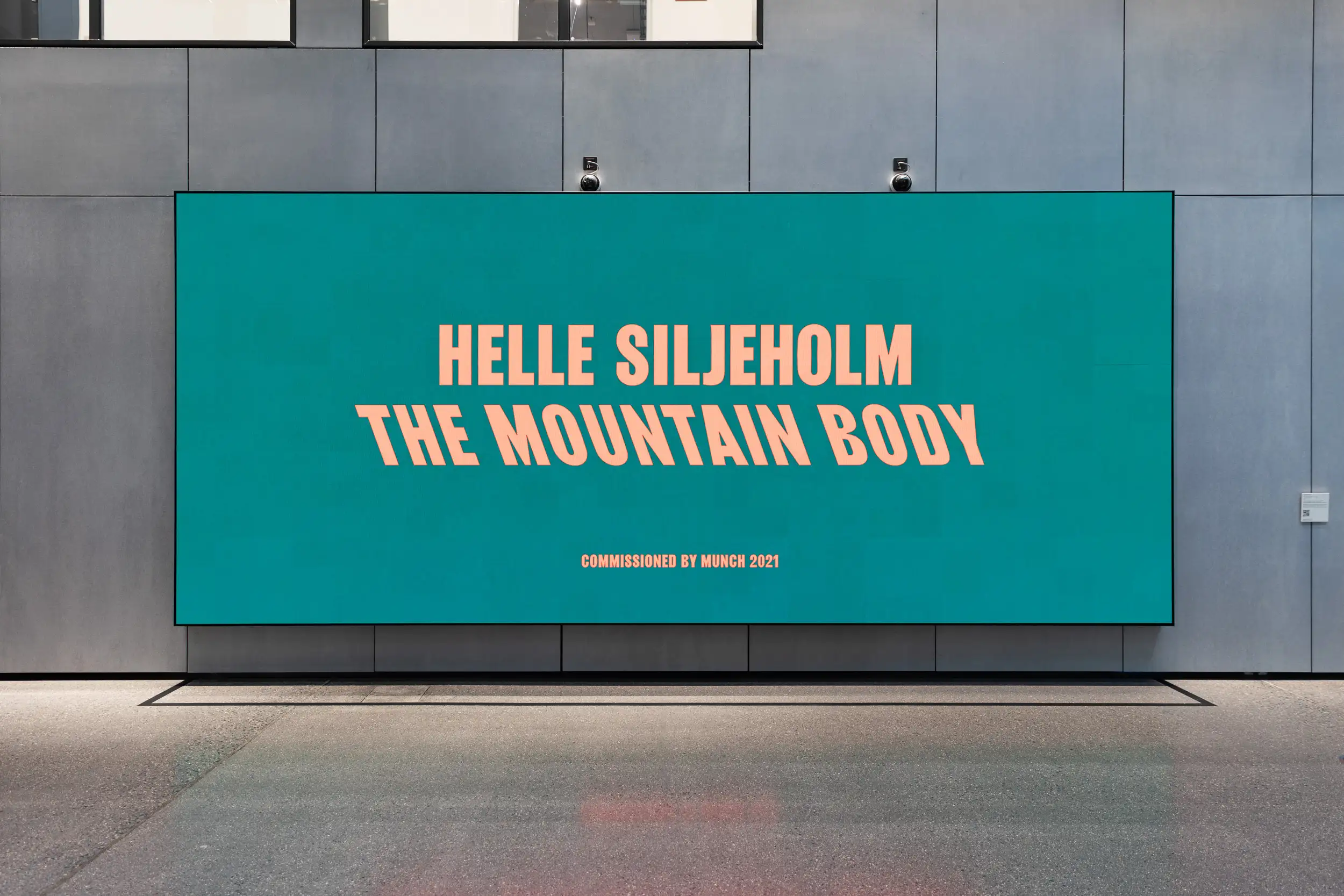
Commissioned by MUNCH for the opening exhibition of the new museum.
Curated by: Tominga Hope O’Donnell
A physical, poetic and visual connection between the mountain, the city and art.
For the opening of MUNCH, artist and choreographer Helle Siljeholm has created a video installation for the screens in the museum showing dancers and mountaineers scaling the mountains at Kolsås in a performance that originally took place August 2021 and part of Black Box Teater seasonal program.
Visitors can follow the climbers upwards through the building, culminating in a telescope on the museum’s 11th floor, pointed at the cliff-face. Through the telescope Østveggen is visible. The traces of the degradable soil pigment that the group of contemporary dancers and climbers make to emphasize the mountain’s own structure is barely visible.
Siljeholm creates both a conceptual and concrete connection between the museum, the city and its surrounding landscape where the mountains form the starting point for different explorations of the relationship between nature and culture in the light of current climate and environmental challenges and through deep time.
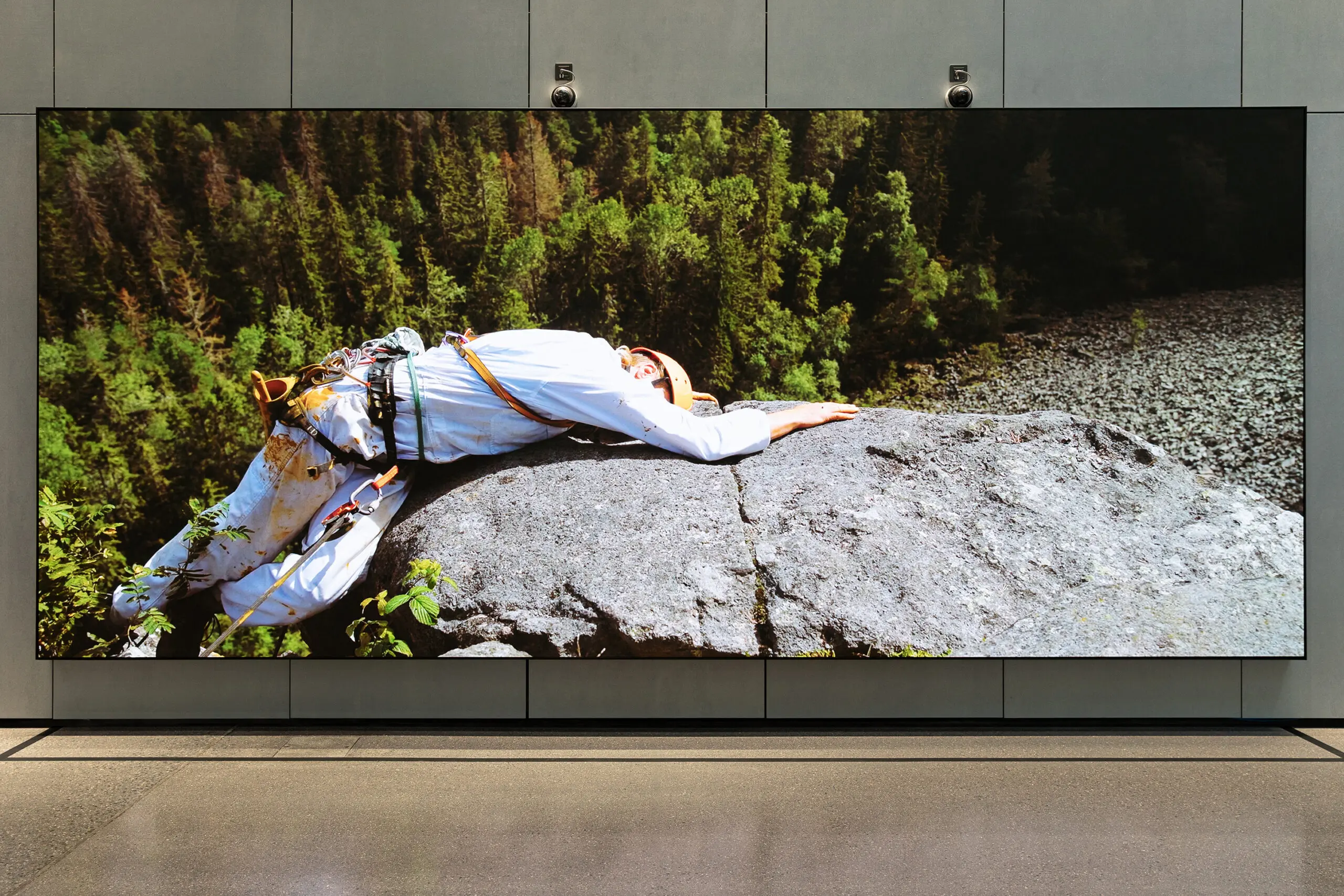
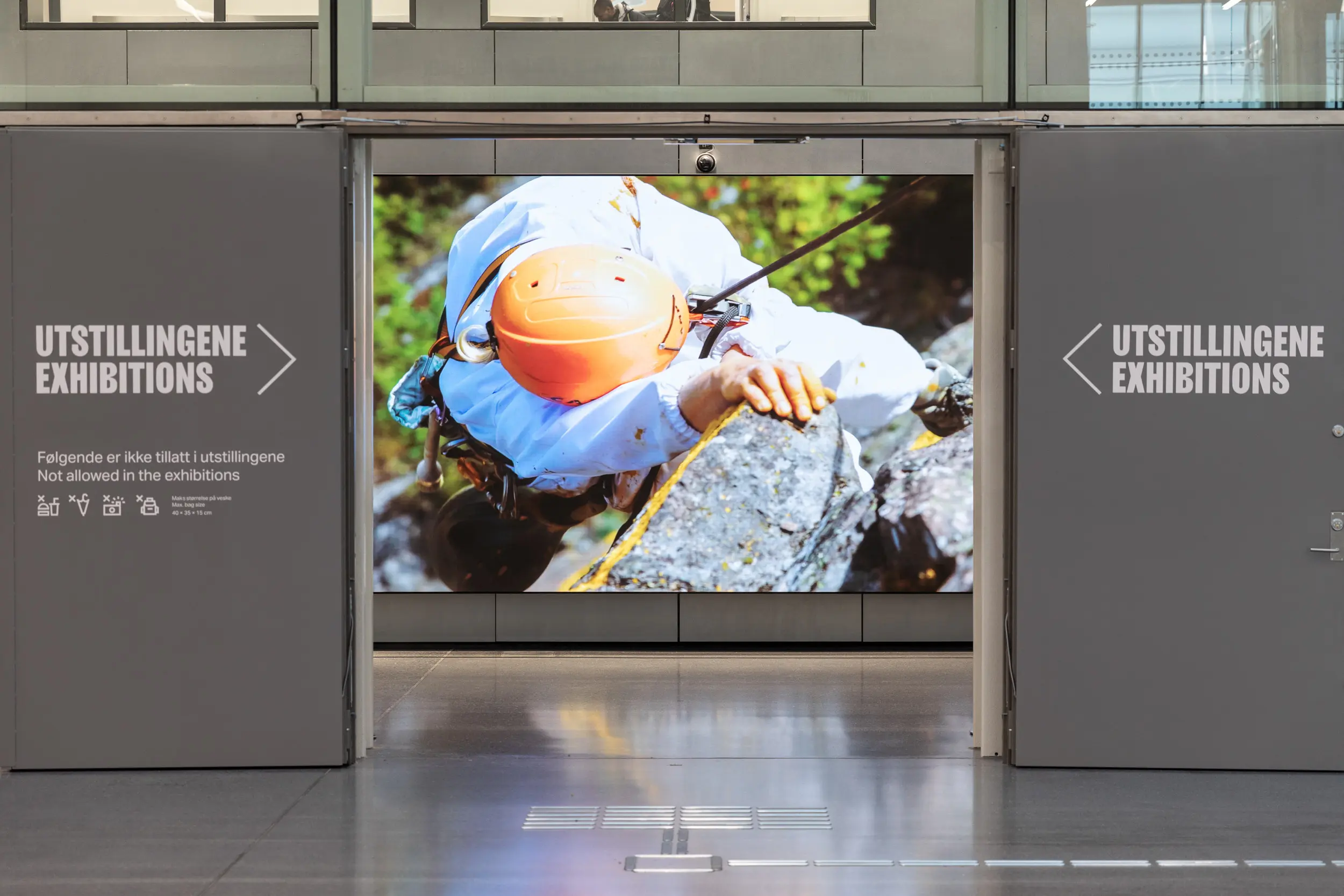
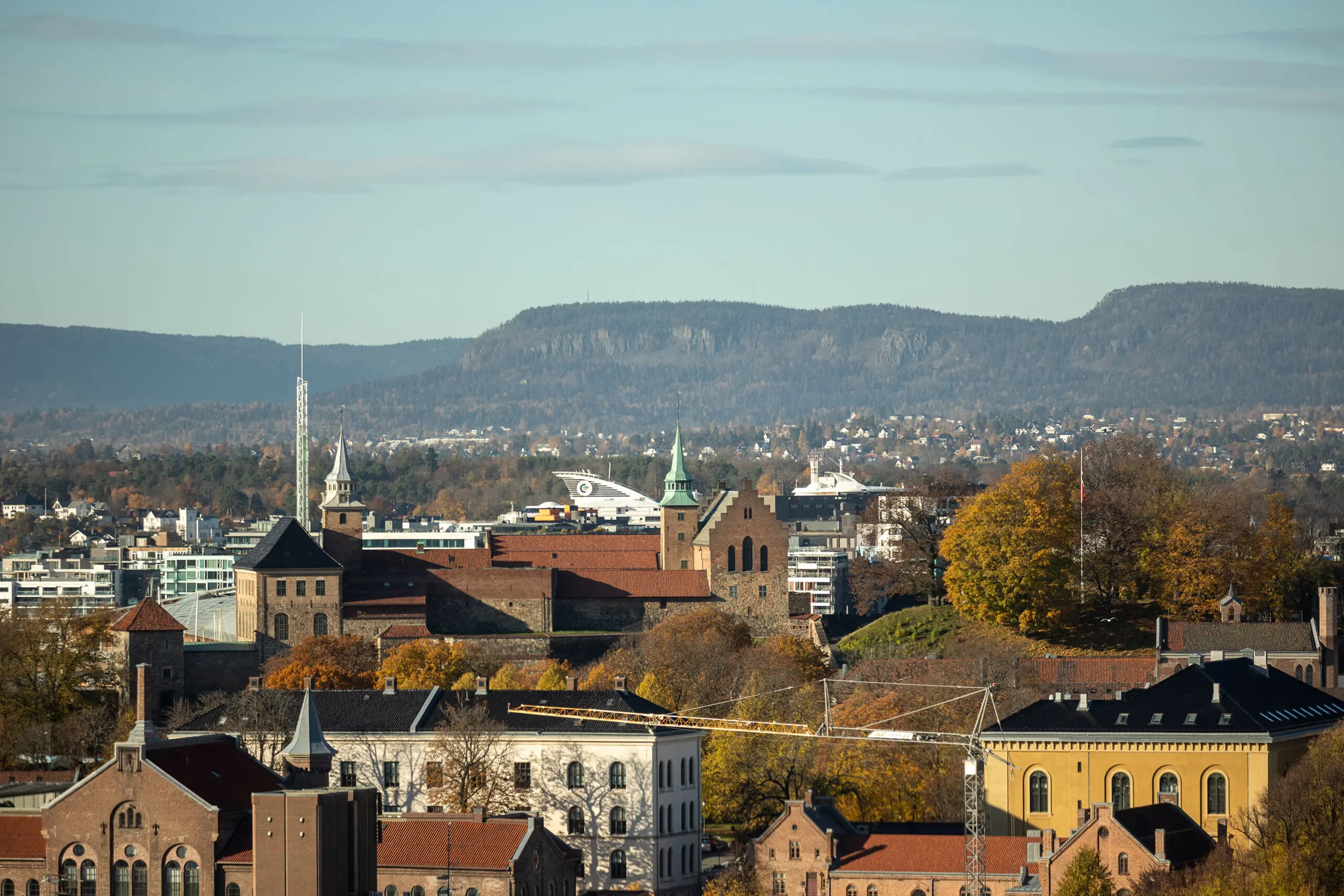
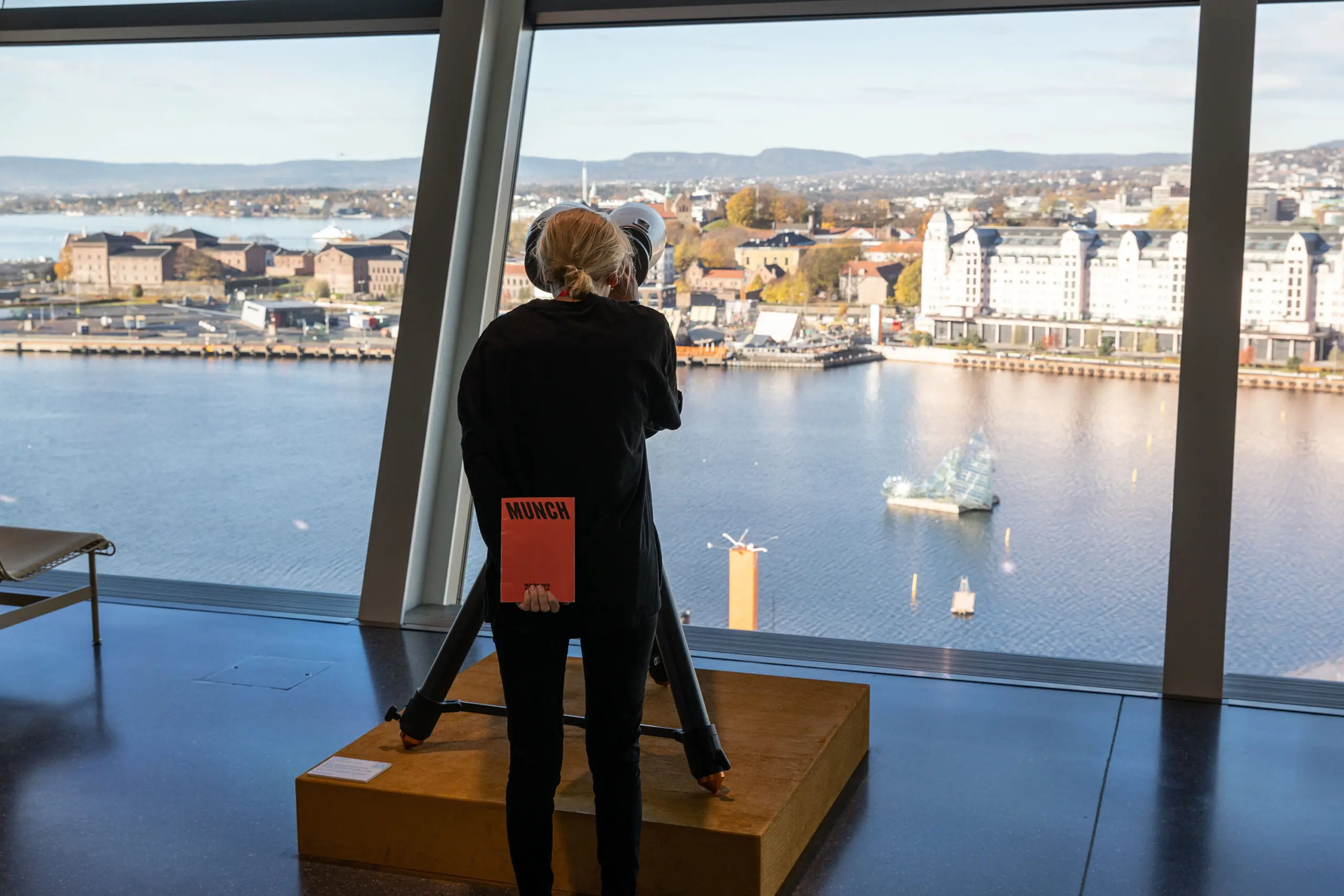
Over several years, The Mountain Body will develop a series of major context-specific installation work in various mountains, which together and over time form a «mountain chain». In various ways, the mountain can be understood as a body, a backbone of the world, which visibly and invisibly continues to influence and be influenced by society: geologically, ecologically, politically and as poetic material.
Kolsåsstupene is the first mountain in this mountain range.
Kolsåsstupene has a rare and complex geological base, with the mountain archive bearing deep time traces of geographical displacement (Oslo was at one time in North Africa), volcanic activity, tropical climate and the ice ages. The large accumulation of the rare ocher-like lava rock rhombic porphyry also puts Kolsås in relation to Antarctica (a still active volcano), Kilimanjaro in Tanzania and North-West Russia.
Since the end of the 19th century, Kolsås has been frequently visited by artists, philosophers, politicians, feminists, environmental activists and climbers. Kolsås appears in several well-known works by, among others, Kitty Kielland and Claude Monet, and forms the horizon in Edvard Munch’s iconic work: Scream. Munch is said to have stood in Ekebergåsen and looked out over the city and the Oslo Fjord. In light of today’s climate challenges, the work’s original title, Nature’s Scream, takes on new and added connotations.
With and by
Concept / Director / Production: Helle Siljeholm / Editing and post-production: Espen Haslene / Tundra * / Performers & climbers: Pernille Holden, Marianne Kjærsund, Anders Rummelhoff, Sjur Hansteen/ Production co- worker: Guro Vrålstad / Photographers: Istvan Virag, Jon Marius Nilsson, Tormod Granheim, Simen Christer Hansen, Karianne Johansen/ Earth pigment: Bent Erik Myrvoll / Plinth construction: Jon Løvøen / Telescope: Courtesy of Teno Astro
Thanks to: Teno Astro and Dæli Gård